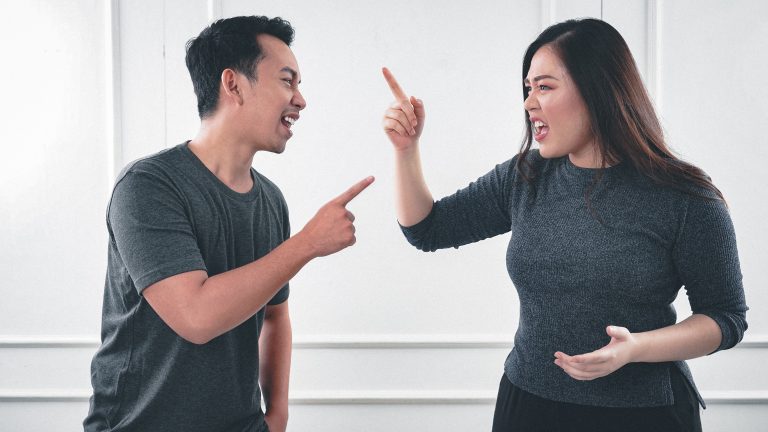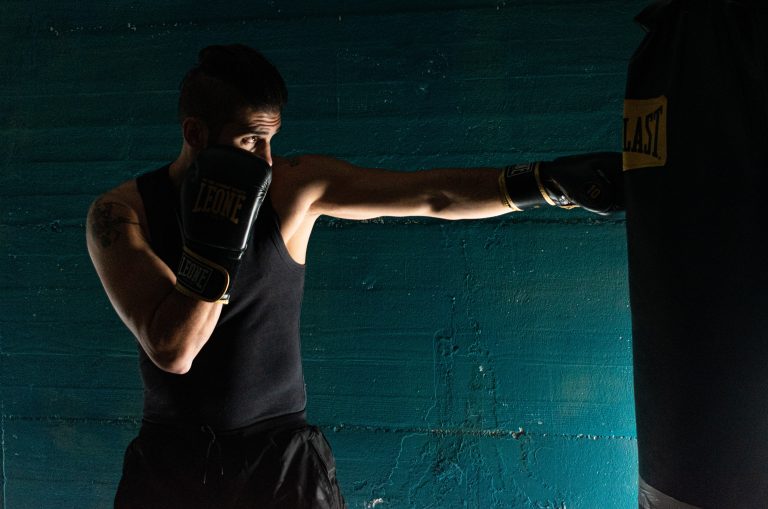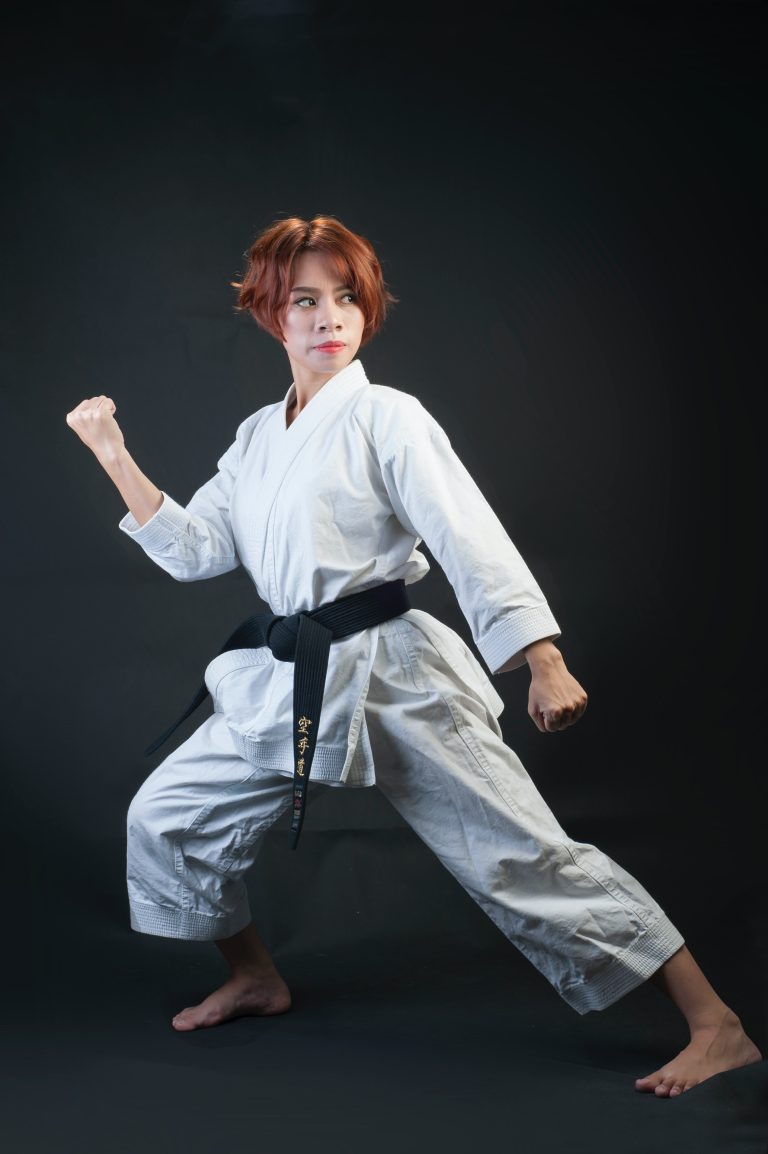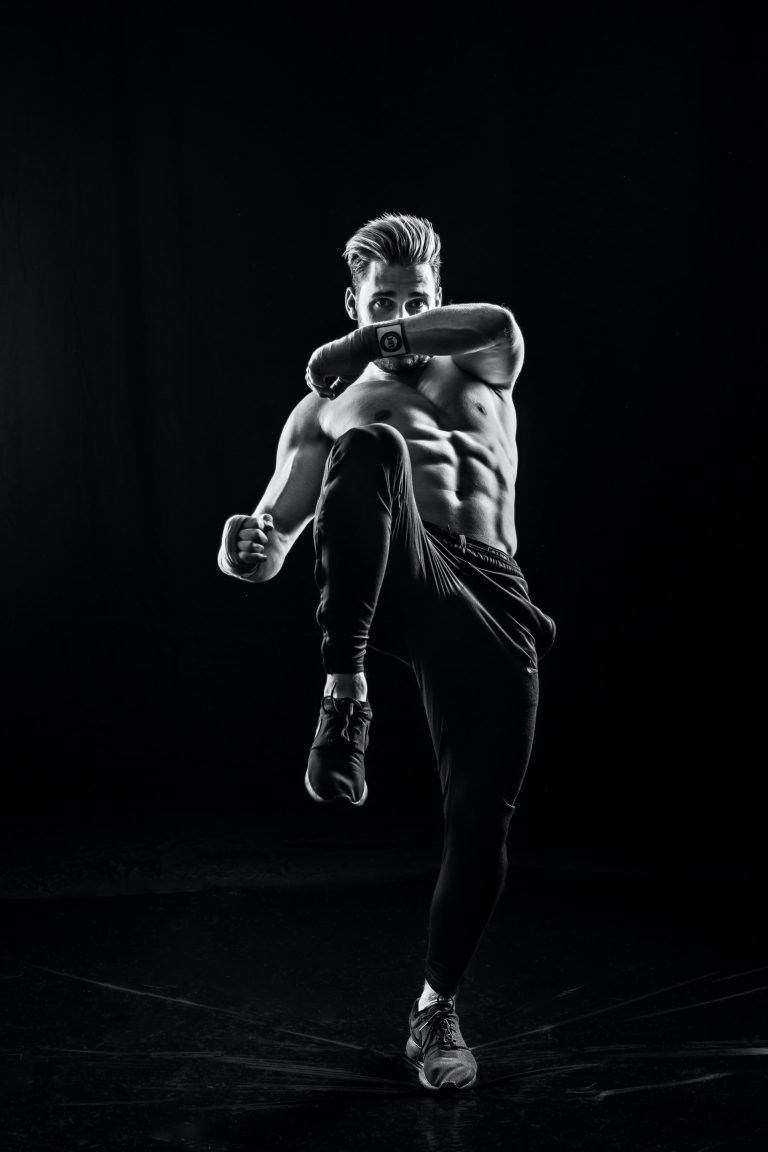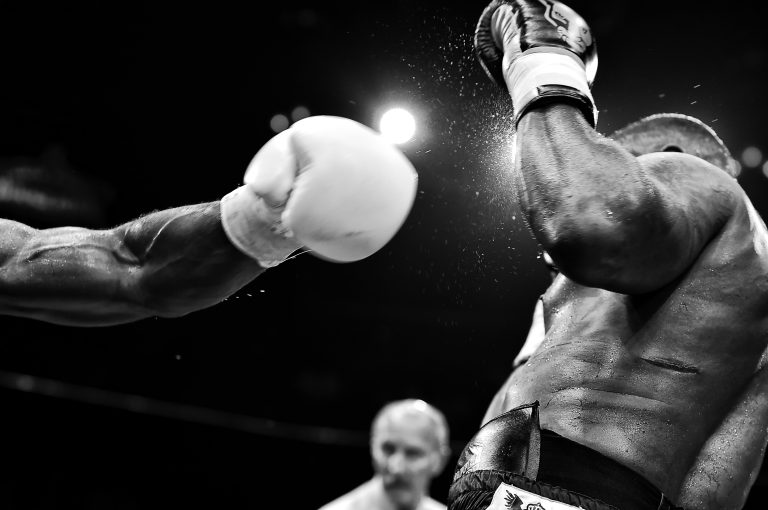All Karate Kick Namen – Eine detaillierte Liste
Karate ist eine Kampfkunst, die aus Japan stammt und verschiedene Techniken wie Tritte, Schläge, Knie und Blockaden beinhaltet. Ein wichtiger Bestandteil des Karate-Trainings sind Tritte, die für Angriffs- und Verteidigungszwecke eingesetzt werden. Deshalb ist es wichtig, die verschiedenen Arten von Karate-Tritten zu kennen. In diesem Artikel werden wir eine detaillierte Liste aller Karate-Kick-Namen vorstellen.
1. Mae-Geri (Frontkick)
Der Mae-Geri ist der grundlegende Frontkick im Karate. Dabei wird das Knie angehoben und der Fuß nach vorne gestoßen. Der Kick wird mit dem Ballen des Fußes ausgeführt.
2. Yoko-Geri (Sidekick)
Der Yoko-Geri ist ein Seitenkick, bei dem das Bein zur Seite ausgestreckt und der Fuß mit der Sohle nach vorne gehalten wird. Der Kick kann seitlich oder diagonal ausgeführt werden.
3. Mawashi-Geri (Roundhouse Kick)
Der Mawashi-Geri ist ein Roundhouse-Kick und wird seitlich ausgeführt. Dabei wird das Bein gestreckt und mit der Fußaußenseite der gegnerische Kopf, Körper oder das Bein getroffen.
4. Ushiro-Geri (Backkick)
Der Ushiro-Geri ist ein Rückwärts-Kick, bei dem sich der Kämpfer umdreht und einen Kick nach hinten ausführt. Der Kick wird meistens mit der Ferse ausgeführt.
5. Hiza-Geri (Knie-Kick)
Der Hiza-Geri ist ein Knie-Kick und wird oft als Low-Kick eingesetzt. Dabei wird das Knie angehoben und mit dem Schienbein der gegnerische Oberschenkel oder das Knie getroffen.
6. Fumikomi (Stamp-Kick)
Fumikomi ist ein Stampf-Kick, bei dem der Kämpfer seinen Fuß mit Wucht auf den Boden stößt und dadurch den Gegner zurückdrängen kann.
7. Ura-Mawashi-Geri (Back Roundhouse Kick)
Der Ura-Mawashi-Geri ist ein Back Roundhouse-Kick, bei dem das Bein hinter dem Körper ausgeführt wird und mit der Ferse das Ziel getroffen wird.
8. Ushiro-Mawashi-Geri (Back Roundhouse Kick)
Der Ushiro-Mawashi-Geri ist ein Back Roundhouse-Kick, bei dem das Bein hinter dem Körper ausgeführt wird und mit dem Spann das Ziel getroffen wird.
9. Yoko-Gake (Sweep)
Der Yoko-Gake ist ein Sweep, bei dem das Bein des Gegners seitlich weggezogen wird, sodass dieser auf dem Boden fällt.
10. Hiki-Ashi (Sliding Step)
Das Hiki-Ashi ist kein Kick, sondern ein Schritt in Richtung des Gegners. Dabei zieht der Kämpfer sein hinteres Bein zuerst nach vorne, um seinen Körper in Bewegung zu bringen. Es wird oft als Vorbereitung für einen Tritt benutzt.
Fazit:
Dies waren die zehn verschiedenen Arten von Karate-Tritten, die ein Kämpfer kennen und man einsetzen sollte. Indem man diese Techniken beherrscht, kann man effektiv sowohl angreifen als auch verteidigen. Es ist wichtig, diese Techniken regelmäßig zu trainieren, um ihre Wirksamkeit zu verbessern.
All Karate Kick Namen – Eine detaillierte Liste: FAQs Answered
Karate is a popular martial art that originated in Japan. It involves various forms of kicks, punches and strikes to master the art. To become a pro in karate, it’s essential to learn all the different types of kicks, including their names and techniques. In this blog post, we will answer some of the most frequently asked questions about all karate kick names.
1. What is a Karate Kick?
A karate kick is a striking technique performed with the leg. It involves using different parts of the leg, such as the foot, ankle, shin or knee, to strike the opponent. Karate kicks are usually fast and forceful, and they can cause significant damage if executed correctly.
2. What are the Different Types of Karate Kicks?
There are several types of karate kicks, including:
a. Mae Geri
Mae Geri is a front kick used to strike the opponent’s body or face with the ball of the foot. This kick is generally used to keep the opponent at a distance or to create an opening for other techniques.
b. Yoko Geri
Yoko Geri is a side kick, which is delivered with the foot turned outward. This kick aims to strike the opponent’s ribs, hip or leg.
c. Mawashi Geri
Mawashi Geri, or roundhouse kick, is a kick in which the striker turns the supporting foot and then kicks with the ball of the foot, heel or shin of the other leg. This kick is generally used to hit the opponent’s head, chest or leg.
d. Ushiro Geri
Ushiro Geri, or back kick, is a kick in which the striker turns their back towards the opponent and then kicks with the heel or ball of the foot. This kick is used to surprise the opponent and usually aimed at the stomach or chest.
e. Hiza Geri
Hiza Geri is a knee kick, in which the striker uses their knee to hit the opponent’s thigh, ribs or face. This kick is generally used in close combat situations.
3. How to Execute a Karate Kick?
To execute a karate kick, follow these simple steps:
- Start with a steady stance, feet hip-width apart, and the body balanced.
- Keep the back straight and look straight ahead.
- Take a small step forward with one foot, and lift the opposite knee till the thigh is parallel to the ground.
- Extend the foot and perform the kick with the correct technique and target.
- Bring the kicking foot back while lowering the knee of the supporting leg.
- Resume the original stance.
4. How to Improve Karate Kicking Techniques?
Improving your karate kicking techniques takes practice, patience and dedication. Here are a few tips to help you:
- Always focus on technique rather than speed or power.
- Practice regularly and consistently.
- Stretch before and after every training session to make your muscles flexible and prevent injuries.
- Work on your balance and footwork.
- Get feedback from your instructor and analyze your own performance to identify areas of improvement.
5. What are the Benefits of Karate Kicks?
Regular karate practice and mastering kicks offer several benefits like:
- Improved balance and coordination.
- Better strength and agility.
- Increased cardiovascular endurance.
- Enhanced self-defense skills.
- Boosted confidence and self-esteem.
6. How to Choose the Right Karate Dojo?
Choosing the right karate dojo is crucial for training effectively and safely. Here are some factors to consider:
- Check the instructor’s credentials and experience.
- Look for a dojo that promotes a safe and supportive environment.
- Consider the dojo’s location and class schedules.
- Attend a trial class to understand what the training is like.
7. Conclusion
In conclusion, mastering all karate kick names is an essential part of learning karate. There are various types of kicks, and each one has its unique benefits and techniques. By following the tips mentioned above, you can improve your kicks and become a pro in karate. Remember to choose the right dojo and practice regularly to enhance your skills further.
Inhaltsverzeichnis

